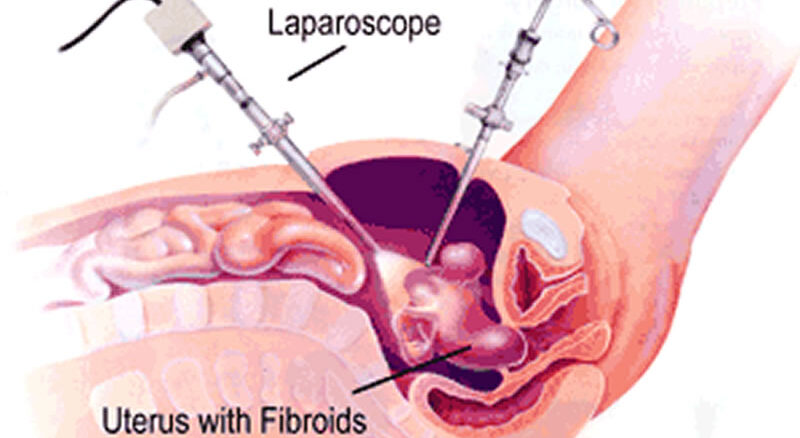This is the surgical removal of fibroid seedlings from the uterus to preserve both the menstrual and reproductive functions of the client. This is done by small incisions and then the fibroid mass is shredded and removed from the pinhole incision.
SYMPTOMS
Most women have fibroids but have no symptoms. When symptoms appear they include:
- Abdominal swelling or feeling pelvic pressure
- Movements within the abdomen described as shifting movements
- Heavy menses with low blood levels, sometimes needing a blood transfusion
- Painful menses
- Difficulty passing urine or passing urine too frequently
CAUSES
Fibroids could be due to genetic changes explaining why in a family you find several women having it. Also, women are prone to it because of estrogen which is found in higher quantity in women of reproductive age group. Estrogen encourages fibroid growth. Being a black woman increases your risk of having fibroids.
PREVENTION
These include healthy eating and maintaining a normal weight through regular exercise.
TREATMENT
When fibroids become symptomatic they may need intervention which includes:
- Medical Management
- Tranexamic acid or NSAID such as Ibuprofen to reduce bleeding and pain
- Use of medications including Gonadotrophin Releasing Hormone Agonists such as Lupron or Zoladex. These temporarily shrink fibroids in preparation for surgery
- IUCD with progestin such as Mirena which reduces the bleeding and pains
- Uterine Artery Embolization
This involves injecting substances that cut off the blood supply from the uterus thus reducing its size over time.
- Laparoscopic Myomectomy
This involves inserting a telescope connected to a monitor into the abdominal cavity through a small INCISION and removing the fibroids from the incision. Large fibroid seedlings are cut and brought out through the incision.
- Abdominal Myomectomy
This is the traditional means of surgery where a large incision is made into the abdomen to remove the fibroid.
- Hysterectomy [Abdominal or Laparoscopic]
For women who no longer desire children, the uterus could be removed by laparoscopy or open surgery.
WHEN TO SEE A DOCTOR
You need to see your doctor if you have:
- Severe pains associated with your menses
- If you lose any amount of blood during your menses that makes you feel dizzy or leading to fainting attacks.
- If your fibroids are increasing in size
- If you have suffered a recurrent miscarriage and have fibroids.
- If you have a uterine fibroid and you are preparing for fertility treatment.

